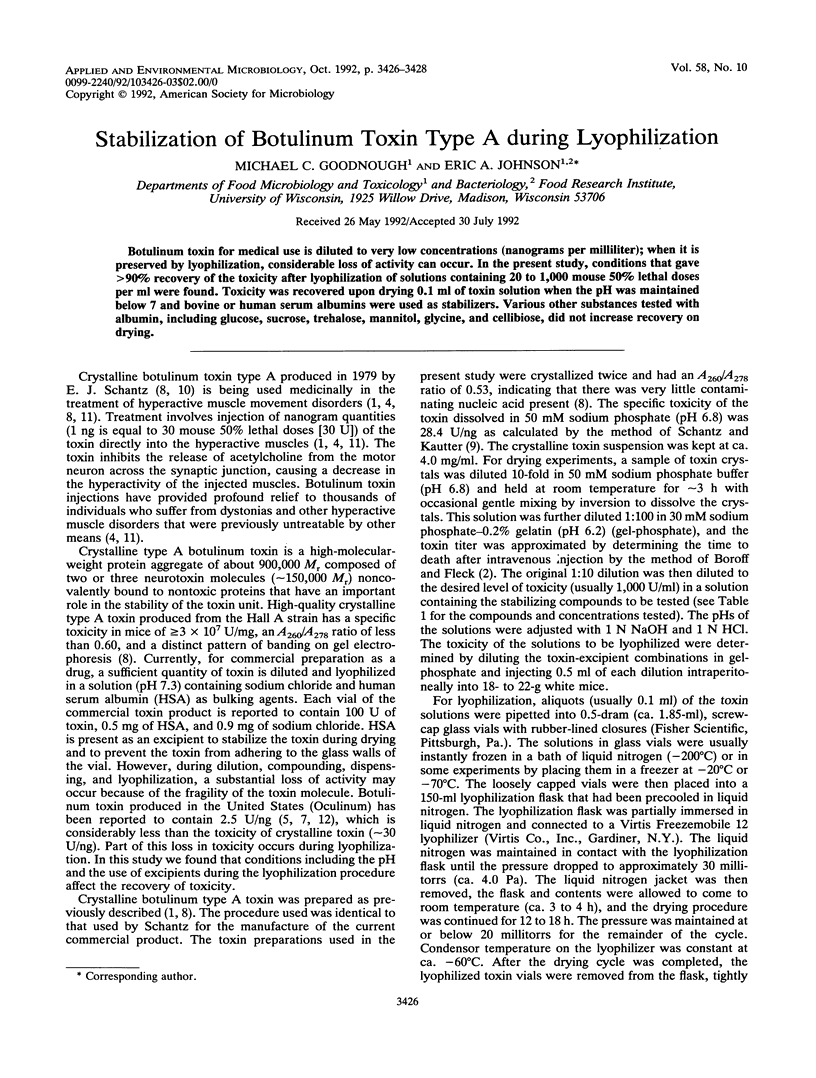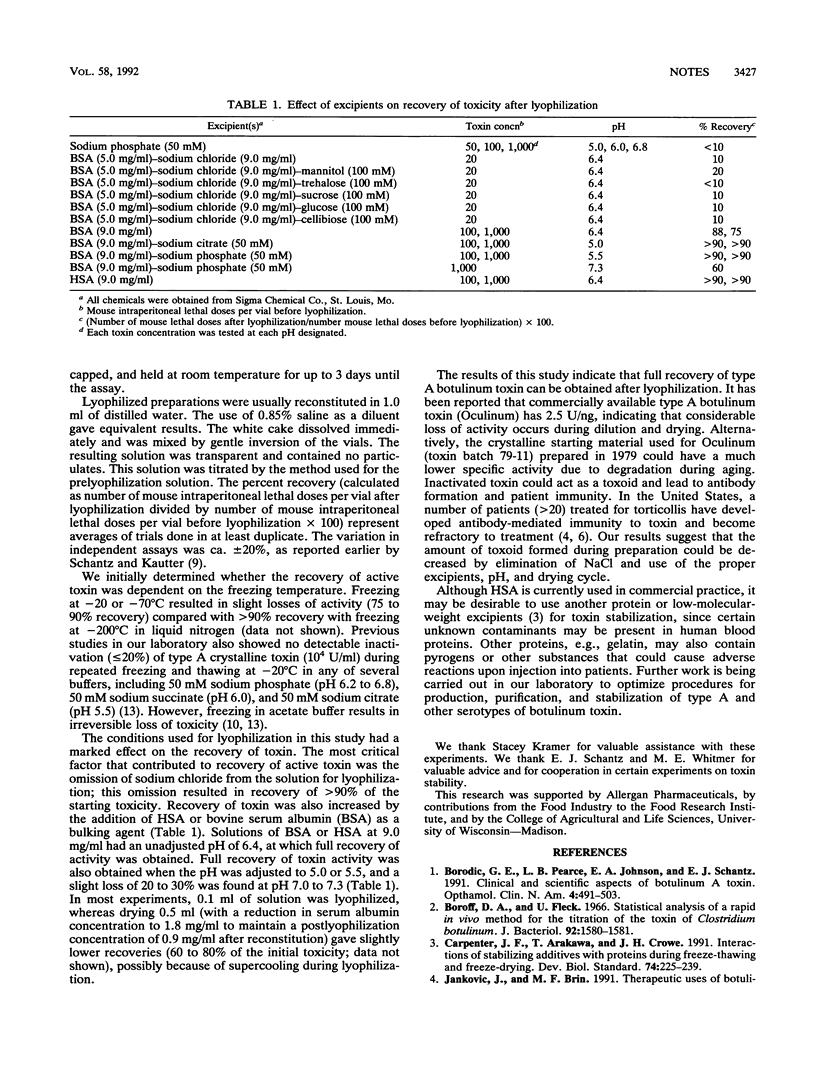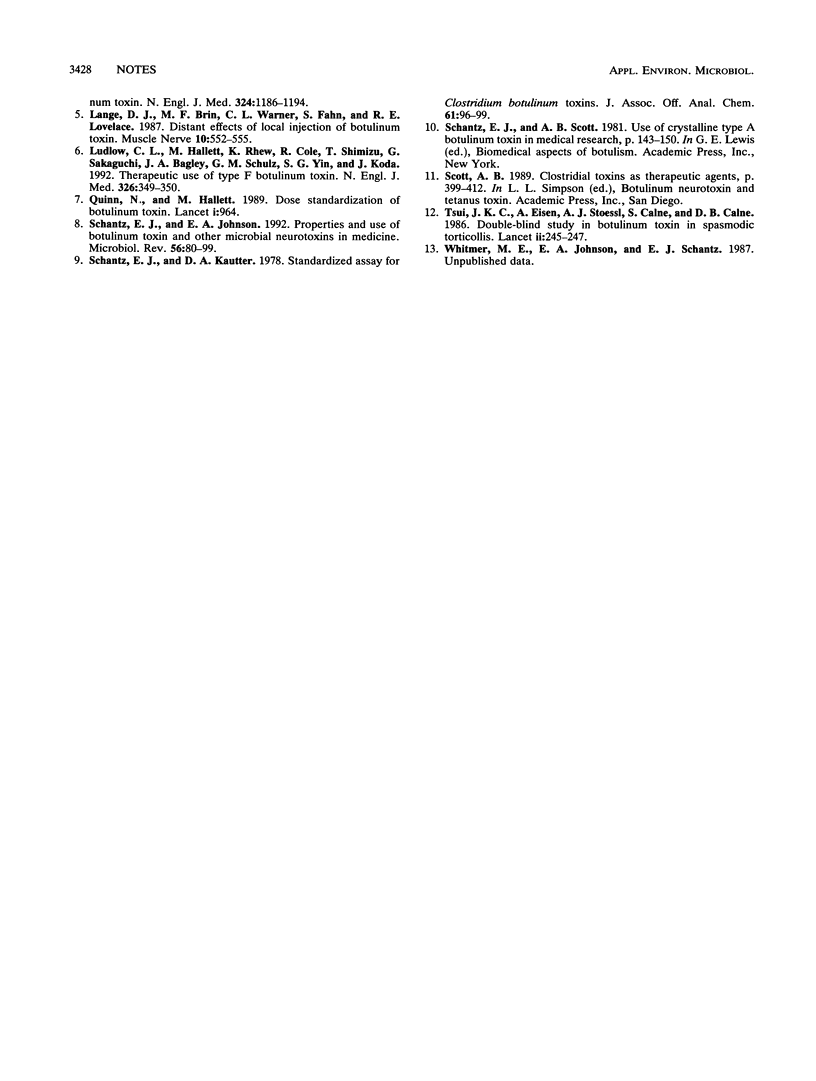Abstract
Botulinum toxin for medical use is diluted to very low concentrations (nanograms per milliliter); when it is preserved by lyophilization, considerable loss of activity can occur. In the present study, conditions that gave > 90% recovery of the toxicity after lyophilization of solutions containing 20 to 1,000 mouse 50% lethal doses per ml were found. Toxicity was recovered upon drying 0.1 ml of toxin solution when the pH was maintained below 7 and bovine or human serum albumins were used as stabilizers. Various other substances tested with albumin, including glucose, sucrose, trehalose, mannitol, glycine, and cellibiose, did not increase recovery on drying.
Full text
PDF


Selected References
These references are in PubMed. This may not be the complete list of references from this article.
- Boroff D. A., Fleck U. Statistical analysis of a rapid in vivo method for the titration of the toxin of Clostridium botulinum. J Bacteriol. 1966 Nov;92(5):1580–1581. doi: 10.1128/jb.92.5.1580-1581.1966. [DOI] [PMC free article] [PubMed] [Google Scholar]
- Carpenter J. F., Arakawa T., Crowe J. H. Interactions of stabilizing additives with proteins during freeze-thawing and freeze-drying. Dev Biol Stand. 1992;74:225–239. [PubMed] [Google Scholar]
- Lange D. J., Brin M. F., Warner C. L., Fahn S., Lovelace R. E. Distant effects of local injection of botulinum toxin. Muscle Nerve. 1987 Jul-Aug;10(6):552–555. doi: 10.1002/mus.880100610. [DOI] [PubMed] [Google Scholar]
- Ludlow C. L., Hallett M., Rhew K., Cole R., Shimizu T., Sakaguchi G., Bagley J. A., Schulz G. M., Yin S. G., Koda J. Therapeutic use of type F botulinum toxin. N Engl J Med. 1992 Jan 30;326(5):349–350. doi: 10.1056/NEJM199201303260516. [DOI] [PubMed] [Google Scholar]
- Quinn N., Hallett M. Dose standardisation of botulinum toxin. Lancet. 1989 Apr 29;1(8644):964–964. doi: 10.1016/s0140-6736(89)92551-8. [DOI] [PubMed] [Google Scholar]
- Schantz E. J., Johnson E. A. Properties and use of botulinum toxin and other microbial neurotoxins in medicine. Microbiol Rev. 1992 Mar;56(1):80–99. doi: 10.1128/mr.56.1.80-99.1992. [DOI] [PMC free article] [PubMed] [Google Scholar]
- Tsui J. K., Eisen A., Stoessl A. J., Calne S., Calne D. B. Double-blind study of botulinum toxin in spasmodic torticollis. Lancet. 1986 Aug 2;2(8501):245–247. doi: 10.1016/s0140-6736(86)92070-2. [DOI] [PubMed] [Google Scholar]


